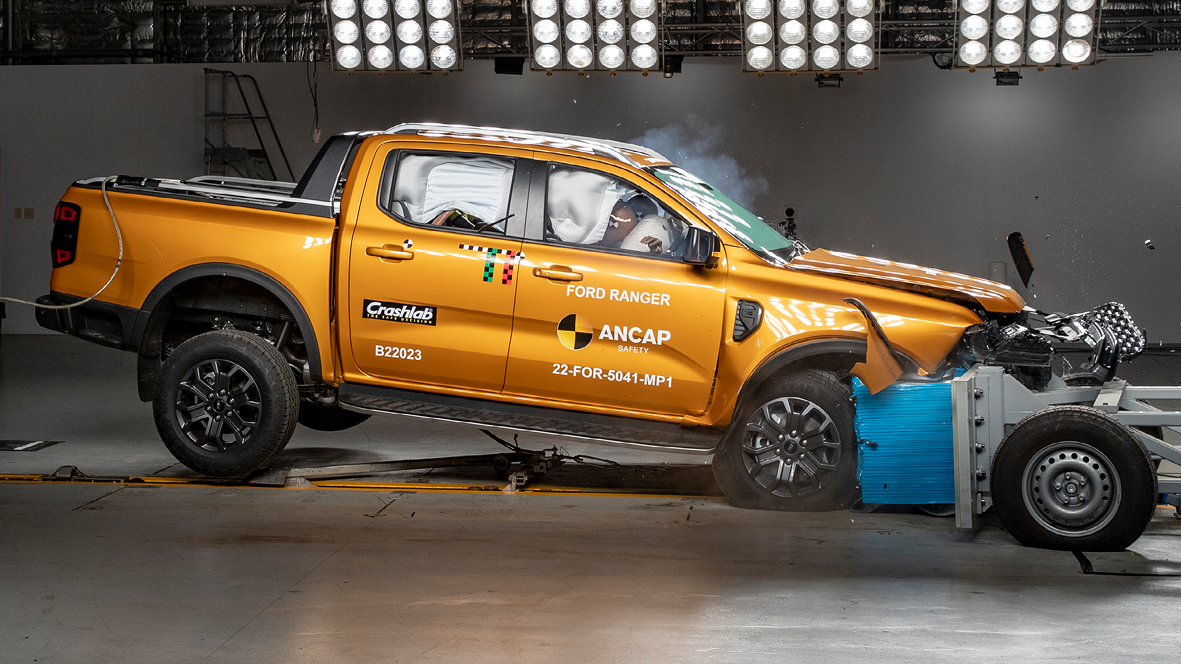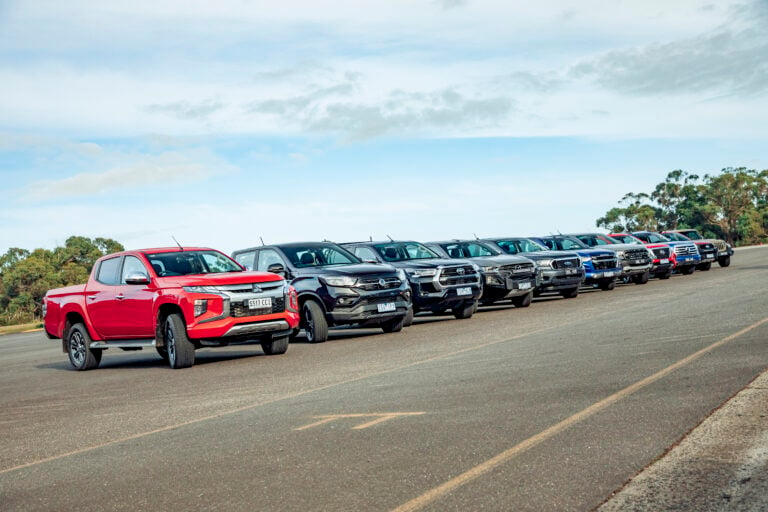Dual-cab ute safety is somewhat of a chicken or the egg question.
Did dual-cab utes become the best-selling vehicles on Australian roads because they have increasingly offered the safety of conventional passenger cars? Or did their popularity, especially as family transport, mean that manufacturers needed to offer more and more safety kit to maintain their competitive advantage?
There are outside influences, too, including the Federal Government mandating of electronic stability control (ESC) on light commercial vehicles (LCVs) from the end of 2017, and demands for five-star ANCAP ratings for Occupational Health and Safety (OH&S) from industry.
Remember, the dual-cab you see as your ‘family car’ is still classified as an light commercial vehicle by the Government and lower-spec variants are often used in work roles.
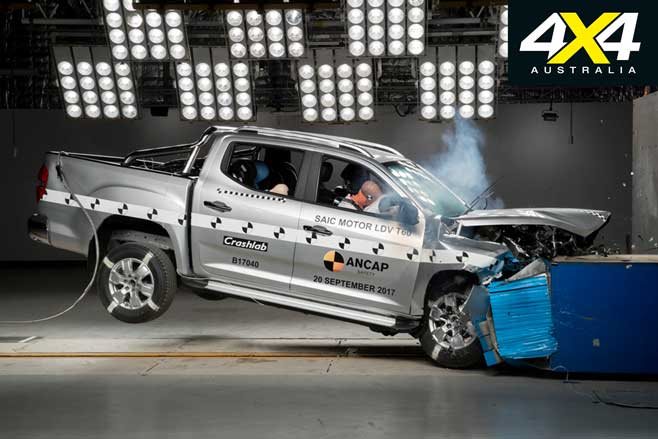
The upshot is that the popular dual-cabs sold today have much more safety kit than dual-cabs of 10 years ago. Interestingly, there’s considerable disparity in the amount of safety kit fitted to these popular dual-cabs with most of them achieving a five-star ANCAP rating.
Some safety kit such as anti-lock brakes (ABS) and electronic stability control (ESC) is of course universal, while advanced safety features such as autonomous emergency braking (AEB) are only just finding their way onto dual cabs. And there are inherent design features such as full-time 4×4 that contribute to safety, but aren’t often recognised as safety features.
All safety features, whether inherent or added on, either help prevent an accident occurring in the first place (primary) or reduce the consequences of an accident if one does occur (secondary). Here’s a rundown of the key safety features.
Eds. note: We’ve largely left the Volkswagen Amarok out of this updated article as the new model doesn’t arrive until 2023. We’ll update it once it has.
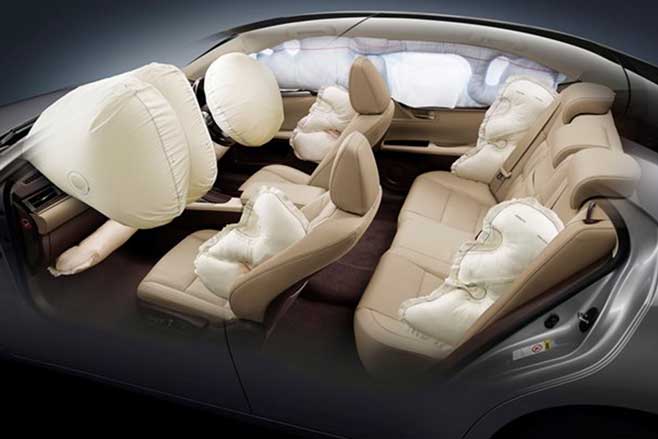
Dual-cab ute airbags
Also known as Supplemental Restraint System (SRS), airbags first started to appear in US cars in the 1970s. In part they were a response to the fact that, while seatbelts were mandatory fitment on cars in the US by that time (and had been around for 20 years), it was more difficult to mandate people to wear them.
Where seatbelts require active participation from the driver, an airbag doesn’t, so the airbag solved the problem of the reluctant seat-belt wearer. Interestingly, the state of Victoria was the first jurisdiction in the world to make seat-belt wearing compulsory for the driver and front-seat passenger.
Initially airbags were just for the driver and installed in the steering wheel. Next came the front passenger airbag installed in the dashboard. Both these airbags protect the head and upper body. Side airbags, installed in the seats and designed to protect the torso from side impacts, and driver’s knee airbags to protect the obvious soon followed.
These have been more recently joined by curtain airbags, installed in the body’s window and/or door pillars, and designed to shield the occupants’ heads from side impacts.
| Front and sideairbags (fitted) | Curtain airbags(fitted) | Driveru2019s kneeairbags (fitted) | |
|---|---|---|---|
| Ford Ranger | u25cf | u25cf | u25cf |
| GWM Cannon Ute | u25cf | u25cf | |
| Isuzu D-Max | u25cf | u25cf | u25cf |
| LDV T60 | u25cf | u25cf | |
| Mazda BT-50 | u25cf | u25cf | u25cf |
| Ssangyong Musso | u25cf | u25cf | |
| Mitsubishi Triton | u25cf | u25cf | u25cf |
| Nissan Navara | u25cf | u25cf | u25cf |
| Toyota HiLux | u25cf | u25cf | u25cf |
Dual-cab ute anti-lock brakes

Anti-lock brakes, or ABS, as it’s abbreviated from the German term ‘Anti-Blockier System’ as coined by automotive-systems manufacturer Bosch, came into use in aircraft in the 1950s to help them stop on wet or icy runways, and appeared 10 years later in cars.
The original systems on both planes and cars were mechanical, but once electronic anti-lock brakes were developed for the groundbreaking faster-than-sound Concorde passenger jet in the 1960s, the ‘electronic’ die was cast and electronic ABS began to appear on cars in the early 1970s.
Anti-lock brakes, as the name suggests, stop the brakes from locking up the wheel and the tyre skidding on the road surface. For emergency braking, ABS can modulate the braking pressure to provide maximum braking, which occurs just before wheel lock-up. This reduces stopping distances and, more importantly, allows the driver to maintain some degree of steering control, which is not possible with locked front wheels, and can even be difficult with locked rear wheels.
ABS uses wheel-speed sensors to tell it what speed each wheel is doing, how quickly it’s slowing down and whether it’s about to lock. That information is fed to an electronic control unit (ECU), or the ‘brain’ of the system, which then activates valves that modulate the hydraulic pressure at each of the individual brakes. ABS also uses a hydraulic pump to maintain the fluid pressure in the system.
The wheel-speed sensors are a simple, but significant, part of active safety technology and also underpin electronic traction control (ETC) and electronic stability control (ESC).
| When advice is outdated |
|---|
| Our braking data shows just how out of date Australiau2019s transport advice is. The commonly accepted figures available on state government websites is that u201ca modern vehicle with good brakes and tyresu201d will take 56m to stop in the dry and 80m in the wet.These figures do not take into account reaction time. While itu2019s undoubtedly important to factor in a comfortable safety margin, the governmentu2019s current figures are not in any way representative of the abilities of modern vehicles. |
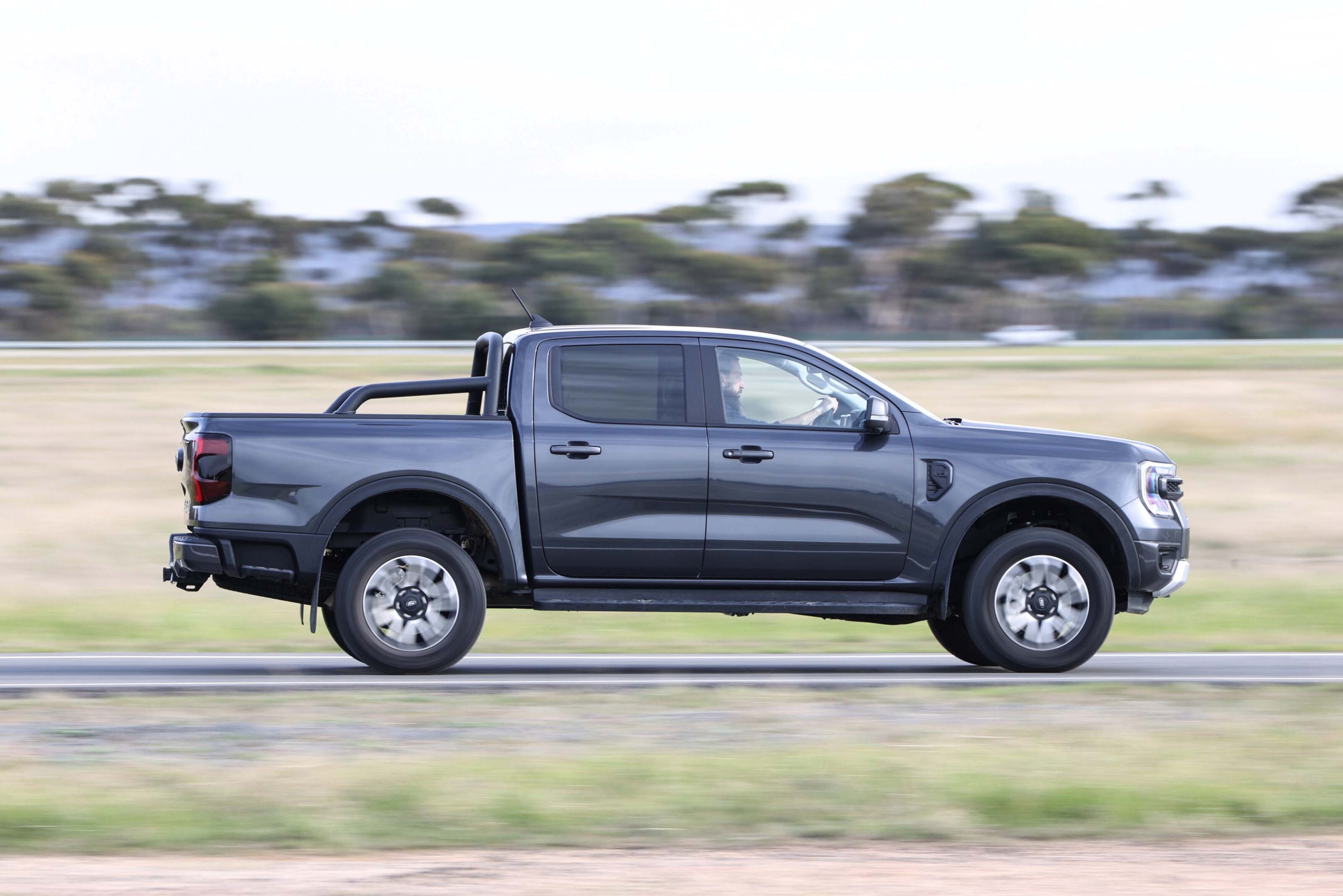
Dual-cab ute brake assist
Brake assist, or BA, sometimes called EBA (for emergency brake assist) or BAS (for brake assist system), helps maximise braking effort in an emergency. It does this by measuring the speed of the brake application and if that speed exceeds a threshold that suggests the driver is trying to execute an emergency stop, it will apply maximum braking effort if the driver hasn’t already done so.
Research suggests that some 90 per cent of drivers fail to apply full brake pressure when faced with an emergency. BA works up to the point where the anti-lock brakes (ABS) take over and is only fitted to vehicles that already have ABS.
| ABS (fitted) | Brake assist(fitted) | |
|---|---|---|
| Ford Ranger | u25cf | u25cf |
| GWM Cannon Ute | u25cf | u25cf |
| Isuzu D-Max | u25cf | u25cf |
| LDV T60 | u25cf | u25cf |
| Mazda BT-50 | u25cf | u25cf |
| Ssangyong Musso | ||
| Mitsubishi Triton | u25cf | u25cf |
| Nissan Navara | u25cf | u25cf |
| Toyota HiLux | u25cf | u25cf |
Dual-cab ute electronic brake-force distribution
Electronic brake-force distribution (EBD) automatically varies the brake force on each wheel depending on the road surface, the speed and, importantly for utes, on the load, as this affects the attitude (nose up or nose down) of the vehicle.
Under most circumstances, and especially when a ute is unladen, the front wheels carry the most load and do the most braking, so less braking effort is applied to the rear wheels so they don’t lock up. With more load in the tub or tray, more braking effort is directed to the rear wheels. Like BA, EBD works in conjunction with ABS.
Dual-cab ute electronic traction control

The development of electronic traction control (ETC), starting in the 1970s, followed hard on the heels of anti-lock brakes. ETC shares the same basic hardware as ABS – wheel-speed sensors, a hydraulic pump and valving system – but requires new software programming, for where ABS stops a wheel from locking under braking, ETC stops a wheel from spinning under acceleration.
ETC was a response to increasingly more powerful cars and their propensity to break traction under acceleration on slippery roads common in winter in North America and Europe. Initial ETC systems used brake pressure on an individual wheel to stop it spinning, but ETC developed from there to a system that can also limit the engine power to bring wheelspin under control. ETC is also beneficial off-road. It’s like having an effective limited-slip differential at both ends of your 4×4.
Second-generation ETC systems for 4x4s add off-road ability and are specifically calibrated for off-road use. As such, off-road specific ETC is more like a locking diff than a good limited-slip diff in the off-road benefit it provides.
Dual-cab ute electronic stability control
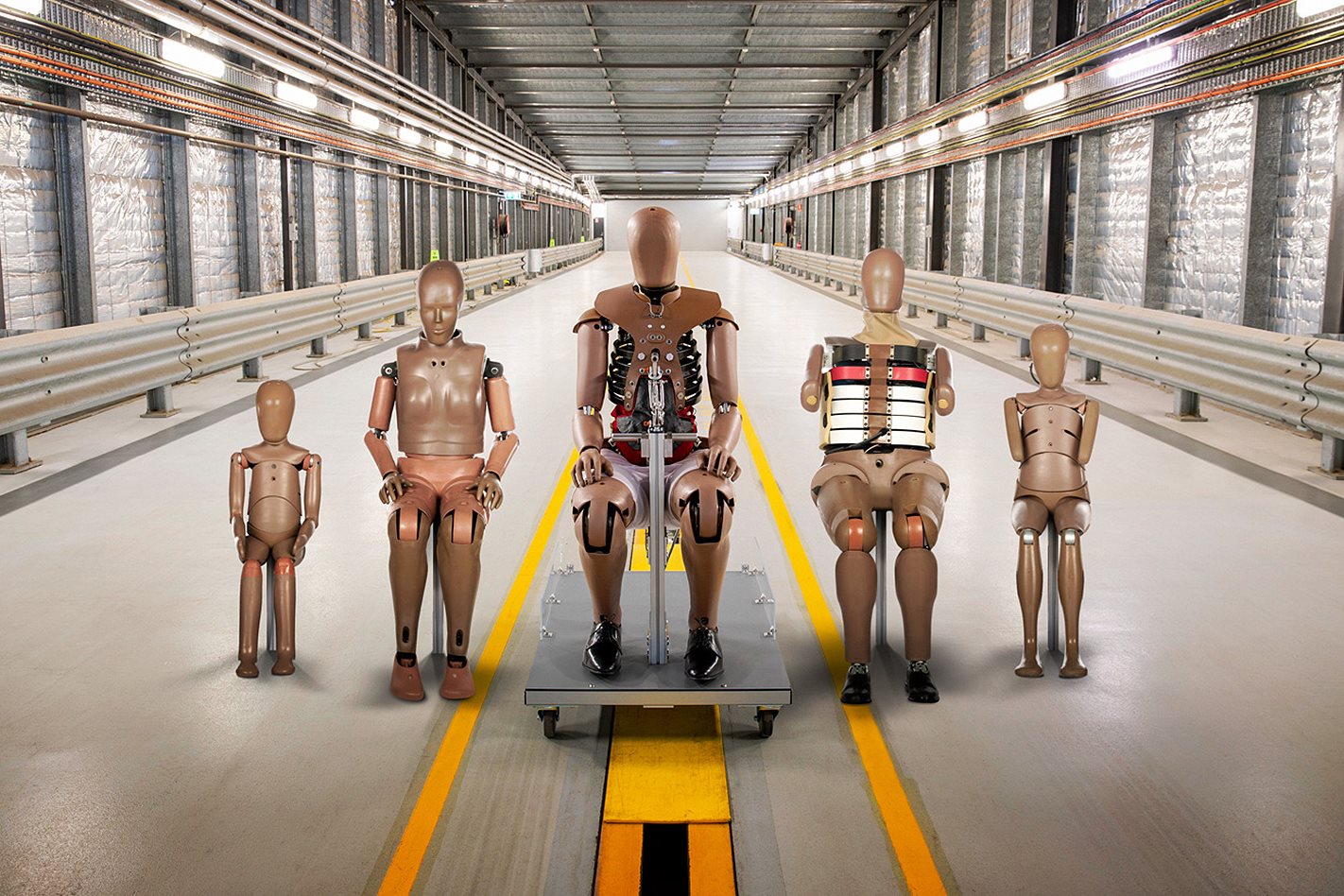
Electronic stability control, or (ESC), goes under a large number of brand-specific names such as electronic stability program, vehicle dynamic control and dynamic stability control, but they all attempt to do the same thing with varying degrees of finesse.
ESC first appeared on production cars in the 1980s and built on ABS and ETC using many of the component systems already in place. However ESC introduces crucial new elements in the mix in the form of steer-angle, yaw, roll and lateral-acceleration sensors.
With information from those sensors, the ESC system is able to work out if the vehicle is heading in the direction steered by the driver, as measured by the steer-angle sensor, or heading somewhere else, as determined by the yaw, roll and lateral-acceleration sensors, as when happens when a vehicle goes into a slide or skid.
If the ESC determines this is the case, which it can do often before the driver realises anything is awry, it will work to counteract the skid or slide by applying the brakes on one or more wheels, often to varying degrees on each wheel, or by cutting the engine power.
While ESC is well proven as one of the most significant safety advances, it can be a hindrance off-road in sand or mud, so not what you necessarily want in a 4×4 when heading off-road.
The problem is that in sand or mud, where you’re counter-steering to correct any small slides, the ESC’s reaction is to apply the brakes and/or cut engine power, neither of which you want when momentum is critical, as is generally the case in sand or mud. Typically ESC is automatically disabled when low-range is engaged and there’s also a switch to manually disable the ESC for sand or mud driving.
The problem with ESC off-road is one of the reasons why some 4x4s are fitted with terrain-specific chassis-control systems (like Land Rover’s ground breaking Terrain Response). When, for example, you select the ‘Sand’ mode on one of these systems, the ESC is desensitised, or even completely disabled.
| Traction control (fitted) | EBD (fitted) | ESC (fitted) | |
|---|---|---|---|
| Ford Ranger | u25cf | u25cf | u25cf |
| GWM Cannon Ute | u25cf | u25cf | u25cf |
| Isuzu D-Max | u25cf | u25cf | u25cf |
| LDV T60 | u25cf | u25cf | u25cf |
| Mazda BT-50 | u25cf | u25cf | u25cf |
| Ssangyong Musso | u25cf | ||
| Mitsubishi Triton | u25cf | u25cf | u25cf |
| Nissan Navara | u25cf | u25cf | u25cf |
| Toyota HiLux | u25cf | u25cf | u25cf |
Dual-cab ute trailer sway control
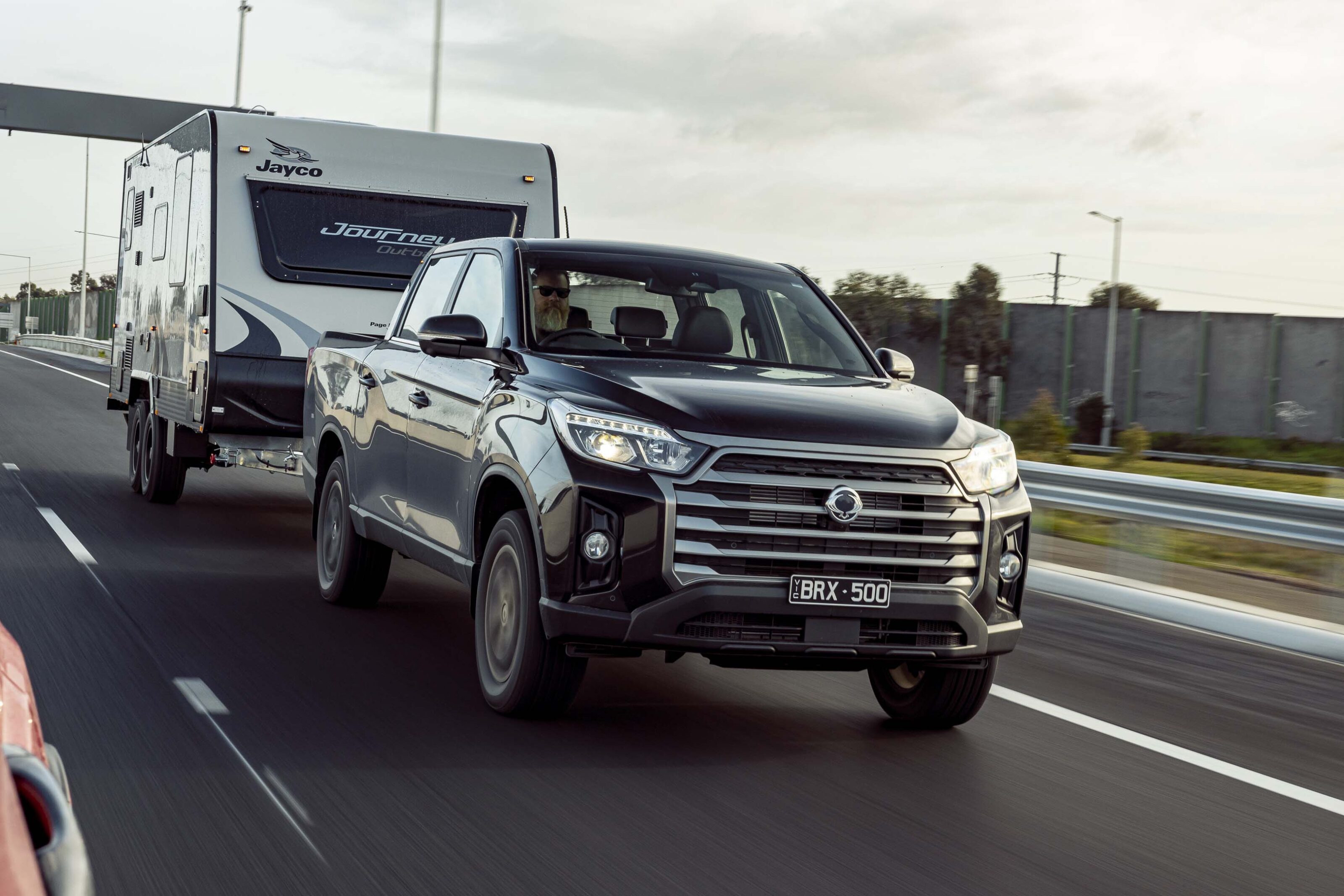
Trailer sway control builds on electronic stability control (ESC) and is a specific software program that works within the broader ESC system to counter any vehicle instability that arises from towing.
Typically that means towing caravans, boats, horsefloats, off-road trailers or anything similar, and is particularly relevant for utes given they are so popular for towing. When towing something that’s heavier than the tow vehicle, Trailer Sway Control is even more useful.
Towing instability can result from a tow rig where the weight distribution isn’t as good as it could be, or can come about with crosswinds, rough roads, higher speeds, off-throttle deceleration through corners or a myriad of other circumstances. If the towed element starts to sway from side to side, that causes an opposite-direction yaw moment at the rear of the tow vehicle which, unchecked, can increase in amplitude until the vehicle-trailer combination ‘jack knifes’ or possibly rolls.
When the trailer sway control detects the beginnings of this type of oscillation it can brake individual wheels or cut engine power to help restore the stability of the vehicle-trailer combination.
Dual-cab ute lane keeping assist
Lane keeping assist is one of the newer safety technologies designed to help counter what can only be called poor driving, be that through inattention, distraction or allowing drowsiness to set in.
Lane keeping assist is distinct from lane departure warning. Where the latter will warn the driver, generally with audible or visual alerts, that the vehicle is veering out of its lane, the former will actually help steer the vehicle back into its lane if the driver doesn’t.
In the case of the Ford Ranger, with its programmable electric power steering (EPS), this is very easy to achieve. In the case of the Toyota HiLux, which doesn’t have EPS, selective brake application is used to create a yaw moment that steers the vehicle back into line.
| Trailer swaycontrol (fitted) | Lane keepingassist (available) | Lane departurewarning (available) | |
|---|---|---|---|
| Ford Ranger | u25cf | u25cf | u25cf |
| GWM Cannon Ute | u25cf | ||
| Isuzu D-Max | u25cf | u25cf | u25cf |
| LDV T60 | u25cf | ||
| Mazda BT-50 | u25cf | u25cf | u25cf |
| Ssangyong Musso | u25cf | ||
| Mitsubishi Triton | u25cf | u25cf | |
| Nissan Navara | u25cf | u25cf | |
| Toyota HiLux | u25cf | u25cf | u25cf |
Dual-cab ute blind-spot monitoring
Blind-spot monitoring uses cameras to detect vehicles that are potentially hidden in the driver’s blind-spots to the rear and side. The warnings are generally via a visual alert in the side mirrors and an audible chime. Blind-spot monitoring is most useful on multi-lane roads and for detecting smaller vehicles such as motorcycles.
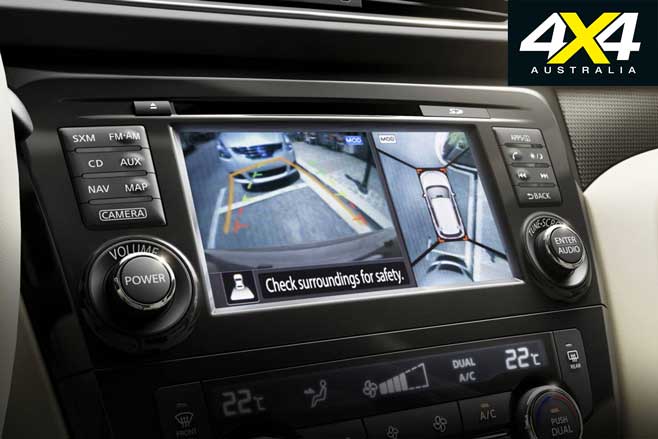
Dual-cab ute reversing camera
Reversing cameras are now standard fitment on all the popular dual-cab pick-ups, and even on some cab-chassis variants. The impetus for reversing cameras came from child injuries and deaths in driveway accidents.
| Blind-spot monitoring(available) | Reversing camera(available) | |
|---|---|---|
| Ford Ranger | u25cf | u25cf |
| GWM Cannon Ute | u25cf | |
| Isuzu D-Max | u25cf | u25cf |
| LDV T60 | u25cf | u25cf |
| Mazda BT-50 | u25cf | u25cf |
| Ssangyong Musso | u25cf | |
| Mitsubishi Triton | u25cf | u25cf |
| Nissan Navara | u25cf | u25cf |
| Toyota HiLux | u25cf |
Dual-cab ute rear cross-traffic alert
Rear cross-traffic alert uses what is effectively a sophisticated wide-view rear camera to alert the driver, via the screen image and audible warnings, of traffic approaching at right angles across the rear of the vehicle. It’s a particularly useful feature in country towns with nose-to-kerb angle parking.
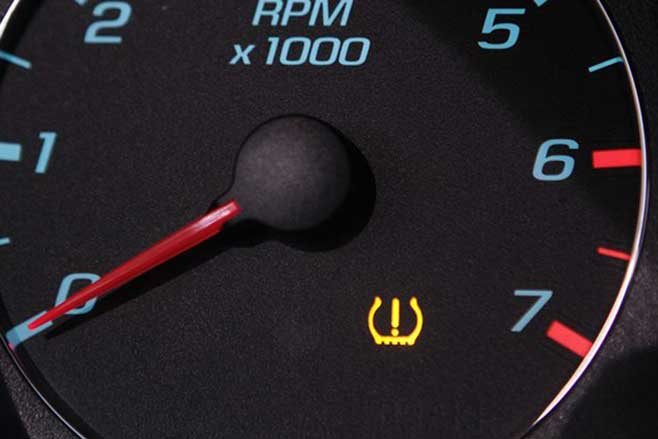
Dual-cab ute tyre pressure monitoring system
Tyre pressure monitoring system, or TPMS as it’s generally abbreviated to, keeps a check on the air pressure in each tyre using pressure sensors in each wheel.
The driver can bring up a display of the pressures in each tyre, but more usefully the system will warn the driver if a tyre is losing pressure generally well before the driver realises there is a problem. This potentially saves the tyre from completely deflating and being damaged beyond repair by being driven on when it is flat. Better still, it can help prevent a flat-tyre induced accident.
Given punctures and tyre damage is very much a commonplace event when driving off road, especially on showroom-stock tyres, TPMS is an extremely worthwhile safety feature for a 4×4.
| Rear cross-trafficalert (available) | Tyre pressure monitoringsystem (available) | |
|---|---|---|
| Ford Ranger | u25cf | u25cf |
| GWM Cannon Ute | u25cf | |
| Isuzu D-Max | u25cf | |
| LDV T60 | u25cf | |
| Mazda BT-50 | u25cf | |
| Ssangyong Musso | u25cf | |
| Mitsubishi Triton | u25cf | |
| Nissan Navara | u25cf | u25cf |
| Toyota HiLux |
Dual-cab ute autonomous emergency braking

Autonomous emergency braking (AEB) is the key new safety technology that’s beginning to find its way into dual-cab utes and it will be mandatory technology on all new cars sold in Australia from March 2023.
AEB is another of the newer safety technologies designed to counter inattentive driving and it provides a safety net to counter the same.
AEB uses radar and/or laser technology to ‘see’ what’s in front of the vehicle and to monitor the distance to whatever’s in the vehicle’s path, be that another vehicle or even a pedestrian or cyclist. If the system decides that a collision is possible it will warn the driver via visual and/or audible alerts.
If the driver doesn’t react by braking, and the system decides that a possible collision has become a probable collision, and the situation is critical, it will automatically apply the brakes without any intervention from the driver. AEB is distinct from forward collision warning, which warns the driver of a possible collision but cannot apply the brakes.

Dual-cab ute full-time 4×4
Often overlooked as a safety feature, perhaps because it’s mechanical and not electronic, and a ‘built-in’ rather than added-on feature, full-time 4×4 offers a considerable safety benefit over part-time 4×4 and is a key safety divide in today’s dual-cab ute market.
The shortfall of part-time 4×4 compared to full-time 4×4 is most apparent on wet or otherwise slippery bitumen roads. Having just the rear wheels rather than all four wheels delivering drive means there’s more demand on electronic traction and stability control systems to prevent wheel spin or skidding.
Full-time 4×4, unlike part-time 4×4, can be used on all road surfaces, so doesn’t require any expertise to use as does part-time 4×4, where the driver has to decide when a road surface is slippery enough to engage high-four without risking potential damage to the transfer case.
As such, full-time 4×4 provides a greater safety benefit for less experienced or less knowledgeable drivers as it reduces the level of decision making required by the driver in variable (dry to wet; sealed to unsealed) road conditions.
| AEB (Available) | Full-time 4×4(Available) | |
|---|---|---|
| Ford Ranger | u25cf | u25cf |
| GWM Cannon Ute | u25cf | u25cf |
| Isuzu D-Max | u25cf | |
| LDV T60 | ||
| Mazda BT-50 | u25cf | |
| Ssangyong Musso | u25cf | |
| Mitsubishi Triton | u25cf | u25cf |
| Nissan Navara | u25cf | |
| Toyota HiLux |
Running the ruler on safety
Almost all the popular dual-cab 4x4s have five-star safety ratings, but they are far from equal in safety equipment.
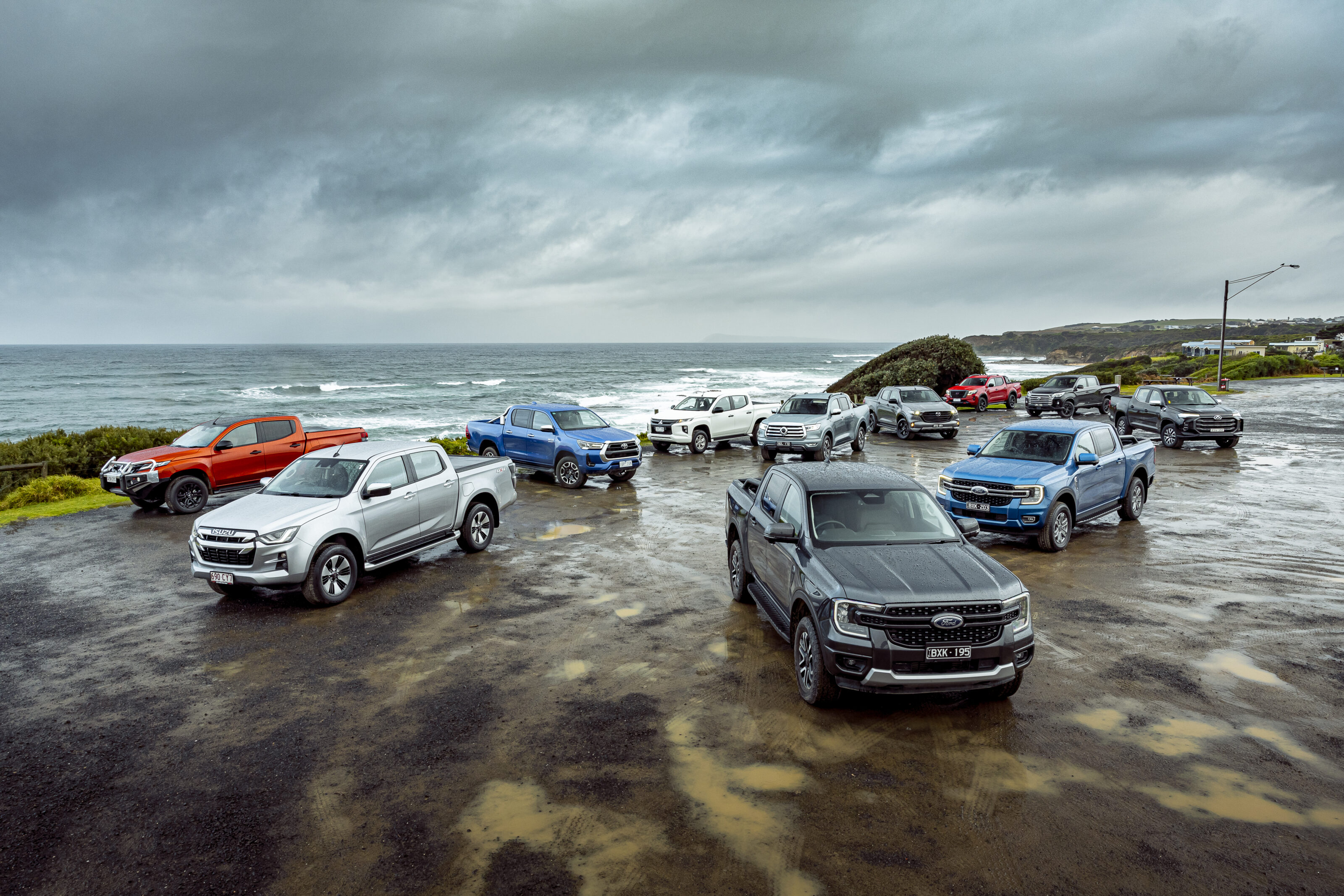
It’s impossible to give a definitive one-to-10 safety ranking of all the popular dual-cabs as it’s impossible to assign a definitive weighting of all the safety features against one another.
For example, is blind-spot monitoring more important than lane departure warning, or a driver’s knee airbag? And is a primary safety feature like full-time 4×4 more important than a secondary safety feature like curtain airbags? What’s more, while all the dual-cabs have, for example, electronic stability control, the calibration and therefore the effectiveness of the individual systems may not be identical.
In the same way, not all autonomous emergency braking (AEB) systems will work in exactly the same way in terms of judging the critical point of intervention. That’s something that will have been programmed into the system using a set of protocols developed by individual engineering teams and will vary from ute to ute.
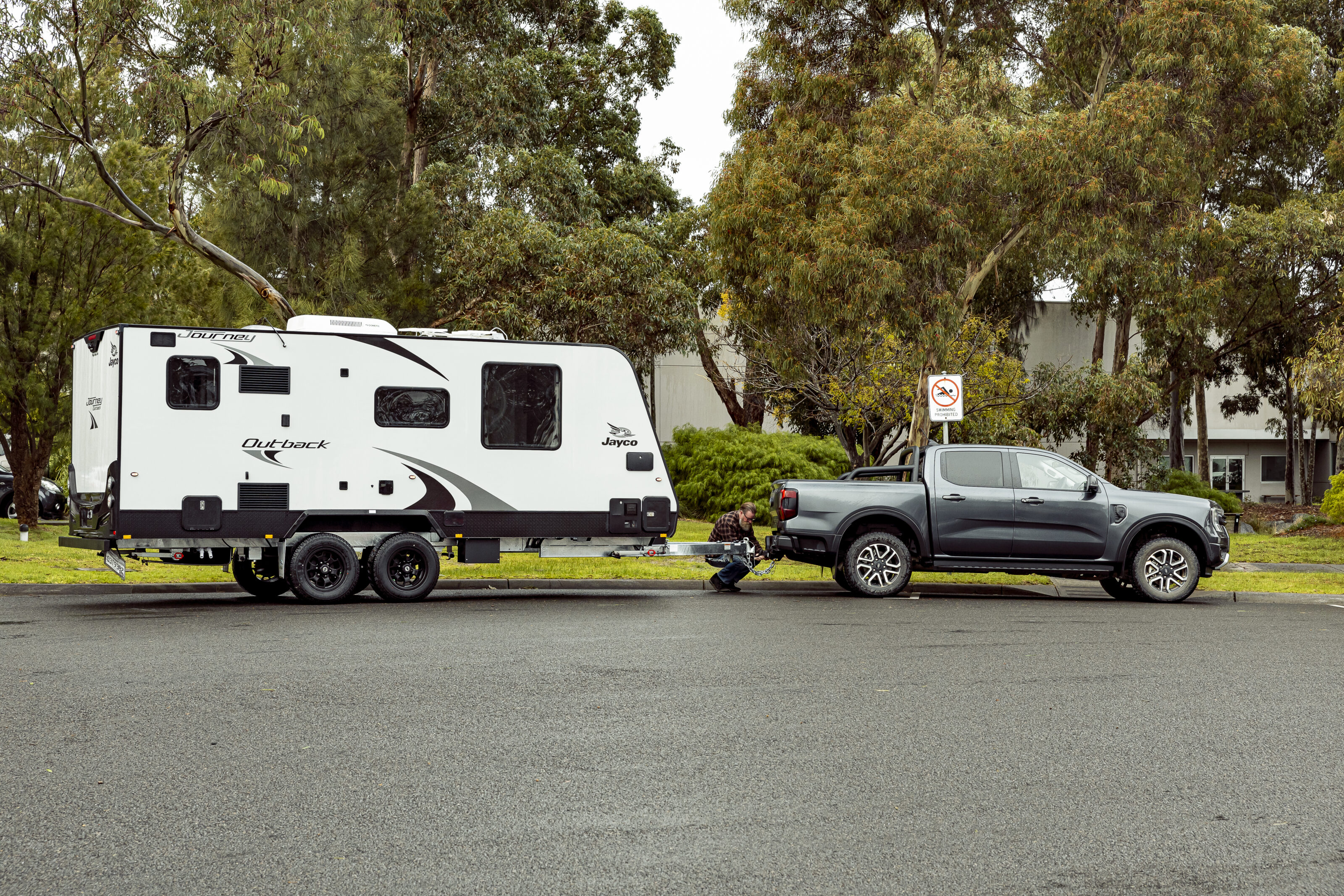
The good news is all of today’s utes are underpinned by a substantial raft of well-proven and effective safety technology, much of which didn’t exist on utes not all that long ago.
Importantly, all of the popular dual-cabs have electronic stability control (ESC), a well-proven safety advantage. ESC also brings trailer sway control, which is significant given utes are the default tow vehicles of today and towing anything heavy obviously brings considerable risks not involved when not towing.
It goes without saying that all of the popular utes also have anti-lock brakes and the other brake-related safety functions such as brake assist and brake-force distribution.
Go beyond this baseline safety and more significant differences start to emerge in as much as AEB, which is considered to be the pointy end of today’s vehicle safety and is only currently available on Ford Ranger, Triton and HiLux, being standard on the HiLux across the range, and on all but lower-spec Ranger and Triton variants.
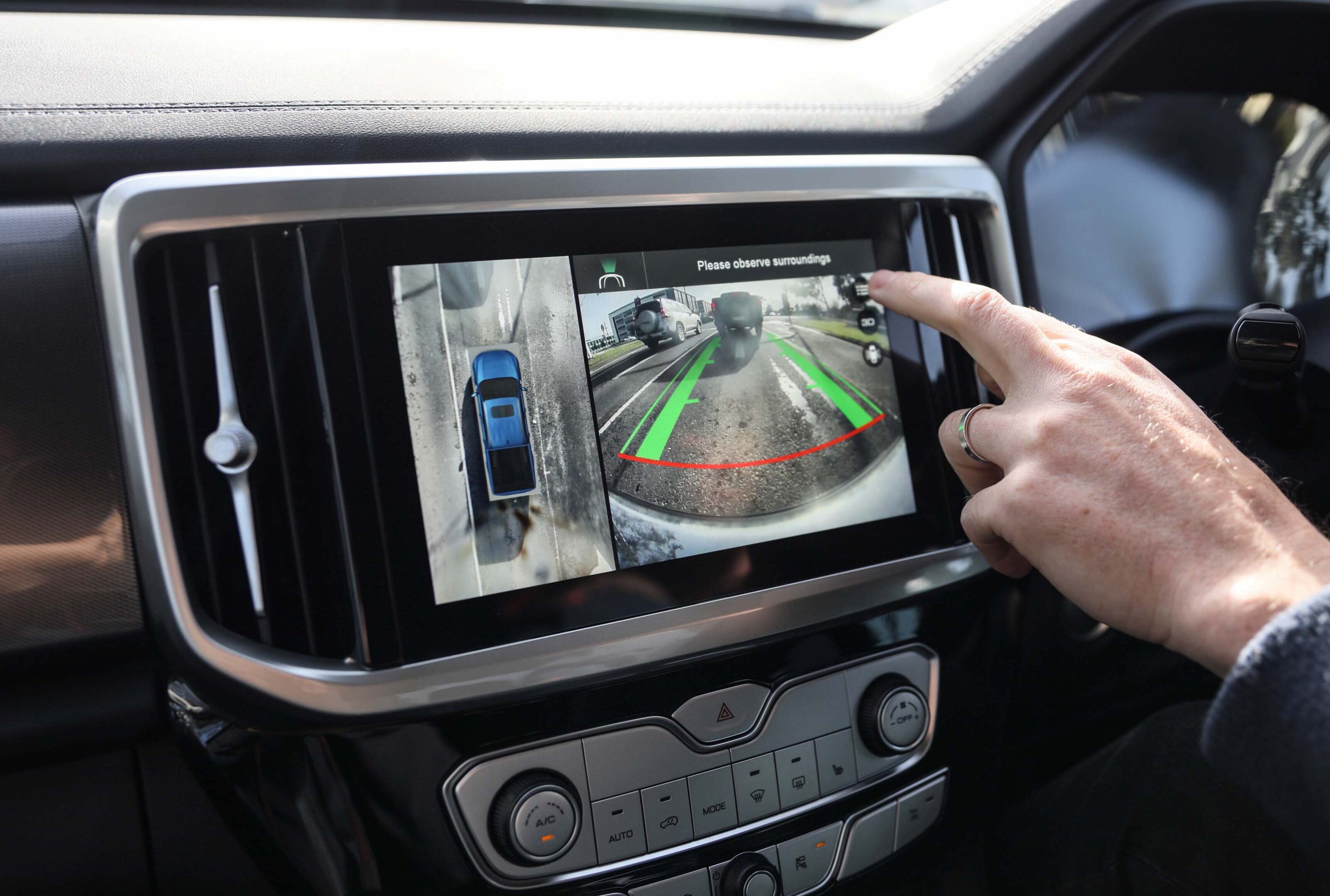
2022 Dual-cab ute safety test verdict
Taking joint top spot in this test were the two Ford Rangers. Both performed well (having identical safety specifications) with nine airbags (the most of any model on test), three-point lap/sash seatbelts all round, childproof door locks, intelligent adaptive cruise control, blind-spot monitoring with cross-traffic alert and trailer coverage, speed limit recognition, lane-keep assist with road edge detection and driver alert, and pre-collision assist with autonomous emergency braking (AEB).
Both XLT and Sport variants have front and rear parking sensors plus a rear-view camera. A 360-degree camera is optional on the Sport.
The Ranger now has a five-star ANCAP rating.
The twins-under-the-skin the Isuzu D-Max LS-U and Mazda BT-50 GT both did admirably, sporting eight airbags apiece, a raft of active safety tech and each earning a five-star ANCAP safety rating in 2020.

An honourable mention goes to the GWM Cannon-X as it has the most recent five-star ANCAP rating, and also gains the Chinese marque’s full suite of safety systems including AEB, forward collision warning, lane departure warning, lane-keep and lane-change assist, front and rear parking sensors, seven airbags, a 360-degree camera and rear door child locks.
Meanwhile, the Nissan Navara and Toyota HiLux both occupied the middle ground with slightly older ANCAP ratings and seven airbags balanced against healthy spec lists.
The Navara was tested by the safety watchdog in 2015, but its rating applies to vehicles built from December 2020 onwards because a mid-life update was introduced locally in early 2021. The HiLux’s ranking however dates back to 2019.

Earning last place was the SsangYong Musso XLV. While its equipment list is respectable – featuring lane departure warning, AEB with forward collision warning, six airbags, front and rear parking sensors, driver attention warning, rear-cross traffic alert and blind-spot monitoring – it is unrated entirely by ANCAP and has a lap belt for the middle rear passenger, which seems outdated and unsafe in the modern age.
Only slightly ahead were the Mitsubishi Triton GSR and GLX+ pair. While the GSR receives the Japanese marque’s full kit list, its five-star safety rating goes back to 2015 and even that will expire at the end of this year – leaving one of Australia’s more popular utes unrated until a new model arrives.
Though the GLX+ gets a forward collision mitigation system with pedestrian detection, it misses out on lane departure warning, blind-spot monitoring and rear cross-traffic alert. Both have six airbags – joining the SsangYong and LDV in the lowest number on offer from our array of utes.
The LDV also lost points for its number of airbags, less extensive feature list and 2017 ANCAP test date.

